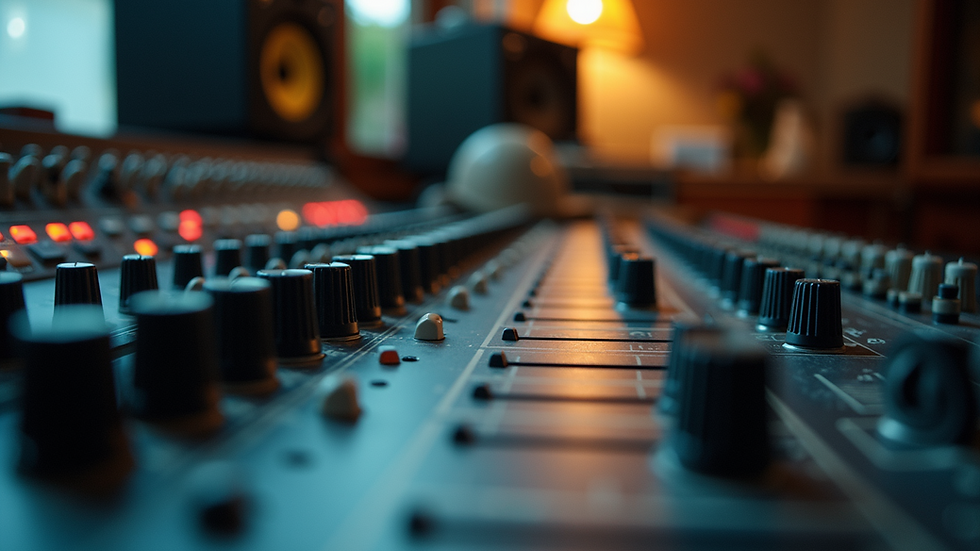Exploring Advanced Beatles Recording Techniques
- Billy Zabaleta
- Sep 30
- 4 min read
The Beatles changed music forever, not just with their songwriting but with their innovative studio work. As a longtime fan and someone fascinated by sound engineering, I find their recording process endlessly inspiring. They pushed the boundaries of what was possible in the studio, creating sounds that still captivate us today. In this post, I want to share some of the advanced Beatles studio tricks that made their music so unique. Whether you’re a musician, a Beatles enthusiast, or just curious about music production, these insights will give you a fresh appreciation for their craft.
Unlocking the Secrets of Advanced Beatles Studio Tricks
The Beatles didn’t just record songs; they crafted sonic experiences. Their studio sessions were full of experimentation, often led by their brilliant engineer Geoff Emerick. One of the most fascinating aspects was how they used the studio itself as an instrument. For example, they employed tape loops, varispeed recording, and creative microphone placement to achieve sounds that were unheard of at the time.
One standout technique was the use of automatic double tracking (ADT). Instead of recording vocals twice, which could be time-consuming, the engineers created a system that duplicated the vocal track with a slight delay. This gave John Lennon’s voice that rich, layered effect heard on many tracks. It was a game-changer and saved precious studio time.
Another trick was their use of backwards recording. On songs like “Rain” and “Tomorrow Never Knows,” they reversed tape recordings to create psychedelic, otherworldly sounds. This wasn’t just a gimmick; it added depth and texture that perfectly matched the mood of the songs.

How Advanced Beatles Studio Tricks Shaped Their Sound
The Beatles’ studio innovations didn’t happen by accident. They were deliberate choices that shaped the sound of their albums. For instance, on Sgt. Pepper’s Lonely Hearts Club Band, they layered multiple instruments and sounds to create a rich, orchestral feel. They used close miking on drums and guitars to capture every nuance, which was unusual at the time.
One of my favorite examples is the song “A Day in the Life.” The famous orchestral crescendo was recorded by having the orchestra gradually play from the lowest to the highest note, creating a rising tension that perfectly complements the lyrics. This was carefully planned and recorded in sections, then spliced together.
The Beatles also experimented with varispeed recording, where they changed the tape speed during recording or playback. This technique altered the pitch and timbre of instruments and vocals. For example, Paul McCartney’s bass on “Rain” was recorded at a slower speed and played back faster, giving it a unique, punchy sound.
These techniques weren’t just technical tricks; they were creative tools that helped the band express their evolving musical ideas. They showed how the studio could be a playground for innovation.

What Beatles Song Did John Lennon Refuse to Sing?
An interesting story from the Beatles’ recording sessions involves John Lennon and the song “Help!” John initially felt uncomfortable singing the song because he thought it was too commercial and didn’t reflect his true feelings. He reportedly refused to sing the song at first, feeling it was too pop-oriented compared to the band’s earlier work.
However, the band and producer George Martin encouraged him to give it a try, and Lennon eventually agreed. His vocal performance on “Help!” is now iconic, showing vulnerability and urgency that perfectly fit the song’s theme. This moment highlights how the Beatles balanced artistic integrity with commercial success, often negotiating their creative choices in the studio.
This story also reminds us that even legendary artists have doubts and challenges during recording. It’s part of the creative process, and sometimes pushing through those moments leads to timeless music.
Practical Tips Inspired by Beatles Recording Techniques
If you’re inspired by the Beatles’ studio magic, here are some practical tips you can try in your own recordings:
Experiment with microphone placement - Try placing mics closer or farther from instruments to capture different tones. The Beatles often used close miking to get a more intimate sound.
Use tape delay or digital delay effects - Create a sense of space and depth by adding subtle delays to vocals or instruments.
Try double tracking vocals - Record your vocal part twice or use digital tools to simulate it for a fuller sound.
Play with tape speed or pitch shifting - If you have access to these tools, experiment with varispeed to create unique textures.
Incorporate unconventional sounds - The Beatles used everything from sitars to household items. Don’t be afraid to add unexpected elements to your tracks.
By embracing these techniques, you can add a creative edge to your music and honor the spirit of innovation that the Beatles championed.

Continuing the Legacy of Beatles Studio Innovation
The Beatles’ studio work remains a treasure trove for anyone interested in music production. Their willingness to experiment and push boundaries changed the way music was made. Today, many producers and engineers still study their methods to learn how to create rich, dynamic recordings.
If you want to dive deeper into the world of Beatles recording, I highly recommend exploring resources like Recording Revolution. They offer unique insights into the band’s sound engineering, especially the work of Geoff Emerick, who played a crucial role in shaping their recordings.
By celebrating these advanced Beatles studio tricks, we keep their legacy alive and inspire new generations of musicians and fans. Whether you’re mixing your own tracks or just appreciating the Beatles’ music, understanding their recording techniques adds a new layer of enjoyment.
Let’s keep exploring and celebrating the magic that made the Beatles’ music timeless. Their studio innovations remind us that creativity and technology together can create something truly extraordinary.



Comments